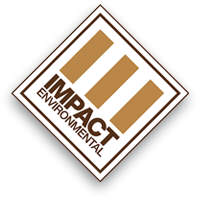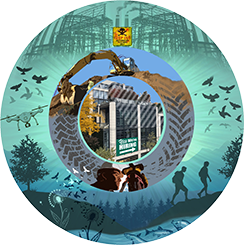Environmental
Justice
Environmental Justice
Community Outreach
Impact Environmental performs professional community outreach services to support companies that operate within overburdened communities (OBCs) mapped areas designated by the USEPA EJScreen tool. The services include the following:
- Environmental Justice Impact Statements
- Environmental Justice Audit Optimization
- Community Event Scheduling, Hosting and Presentations
- Mandatory Community Event Notifications – Print and Digital Media
- Professional Permitting Guidance
EJScreen
Since the early 1970s, there has been increasing concern over disproportionate environmental and human health impacts on minority populations and low-income populations. To address this concern, President Clinton issued Executive Order 12898 on February 11, 1994, Federal Actions to Address Environmental Justice in Minority Populations and Low-Income Populations (hereafter, 1994 EO). The 1994 EO directed each federal agency “to make achieving environmental justice part of its mission by identifying and addressing, as appropriate, disproportionately high and adverse human health or environmental effects of its programs, policies, and activities on minority populations and low-income populations.” A Presidential Memorandum accompanying the 1994 EO directed federal agencies to analyze “the environmental effects, including human health, economic and social effects, of Federal actions, including effects on minority communities and low-income communities, when such analysis is required by the National Environmental Policy Act of 1969 (NEPA).”
In order to better meet the Agency’s responsibilities related to the protection of public health and the environment, EPA has developed a new environmental justice (EJ) mapping and screening tool called EJScreen. It is based on nationally consistent data and an approach that combines environmental and demographic indicators in maps and reports.
In 2021, President Biden revised and reinvigorated Executive Order 12898 (hereafter, 2021 EO). The order established a White House Environmental Justice Interagency Council and a White House Environmental Justice Advisory Council to prioritize environmental justice and ensure a whole-of-government approach to addressing current and historical environmental injustices, including strengthening environmental justice monitoring and enforcement through new or strengthened offices at the Environmental Protection Agency, Department of Justice, and Department of Health and Human Services.
On September 18, 2020, the New Jersey Environmental Justice Law, NJSA, New Jersey Statutes 13:1D-157, requires the New Jersey Department of Environmental Protection (NJDEP) to evaluate the contributions of certain facilities to existing environmental and public health stressors in overburdened communities when reviewing certain permit applications and application renewals. An Overburdened Community as defined by the statute, is any census block group, as determined in accordance with the most recent United States Census, in which:
at least 35 percent of the households qualify as low-income households (at or below twice the poverty threshold as determined by the United States Census Bureau);
at least 40 percent of the residents identify as minority or as members of a State recognized tribal community; or
at least 40 percent of the households have limited English proficiency (without an adult that speaks English “very well” according to the United States Census Bureau).Title 13 – Conservation and Development–Parks and Reservations
The statute is intended to address the disproportionate environmental and public health impacts of pollution on overburdened communities. Inasmuch, the New Jersey State Legislature found and declared the following:
- that all New Jersey residents, regardless of income, race, ethnicity, color, or national origin, have a right to live, work, and recreate in a clean and healthy environment; that, historically, New Jersey’s low-income communities and communities of color have been subject to a disproportionately high number of environmental and public health stressors, including pollution from numerous industrial, commercial, and governmental facilities located in those communities;
- that, as a result, residents in the State’s overburdened communities have suffered from increased adverse health effects including, but not limited to, asthma, cancer, elevated blood lead levels, cardiovascular disease, and developmental disorders; that children are especially vulnerable to the adverse health effects caused by exposure to pollution, and that such health effects may severely limit a child’s potential for future success; that the adverse effects caused by pollution impede the growth, stability, and long-term well-being of individuals and families living in overburdened communities; that the legacy of citing sources of pollution in overburdened communities continues to pose a threat to the health, well-being, and economic success of the State’s most vulnerable residents; and that it is past time for the State to correct this historical injustice;
- that no community should bear a disproportionate share of the adverse environmental and public health consequences that accompany the State’s economic growth; that the State’s overburdened communities must have a meaningful opportunity to participate in any decision to allow in such communities certain types of facilities which, by the nature of their activity, have the potential to increase environmental and public health stressors; and that it is in the public interest for the State, where appropriate, to limit the future placement and expansion of such facilities in overburdened communities.
The NJDEP has provided an on-line interactive mapping tool for defining the metes and bounds of statewide Overburdened Communities. The mapping tool is based upon maps provided by the US Environmental Protection Agency (EJScreen). Projects within Overburdened Community areas are required to coordinate with the NJDEP Office of Permitting and Project Navigation (“OPPN”).
For more information on the Law, to get updates and/and participate in the stakeholder process please visit https://www.nj.gov/dep/ej/policy.html#ejlaw
Impact's Role
Community outreach services have been a part of Impact’s vision for a long time. Now more than ever these services are playing a huge role in environmental justice. We are on this – and will continue to be at the forefront of human health impacts. Follow us for more resources and information.




